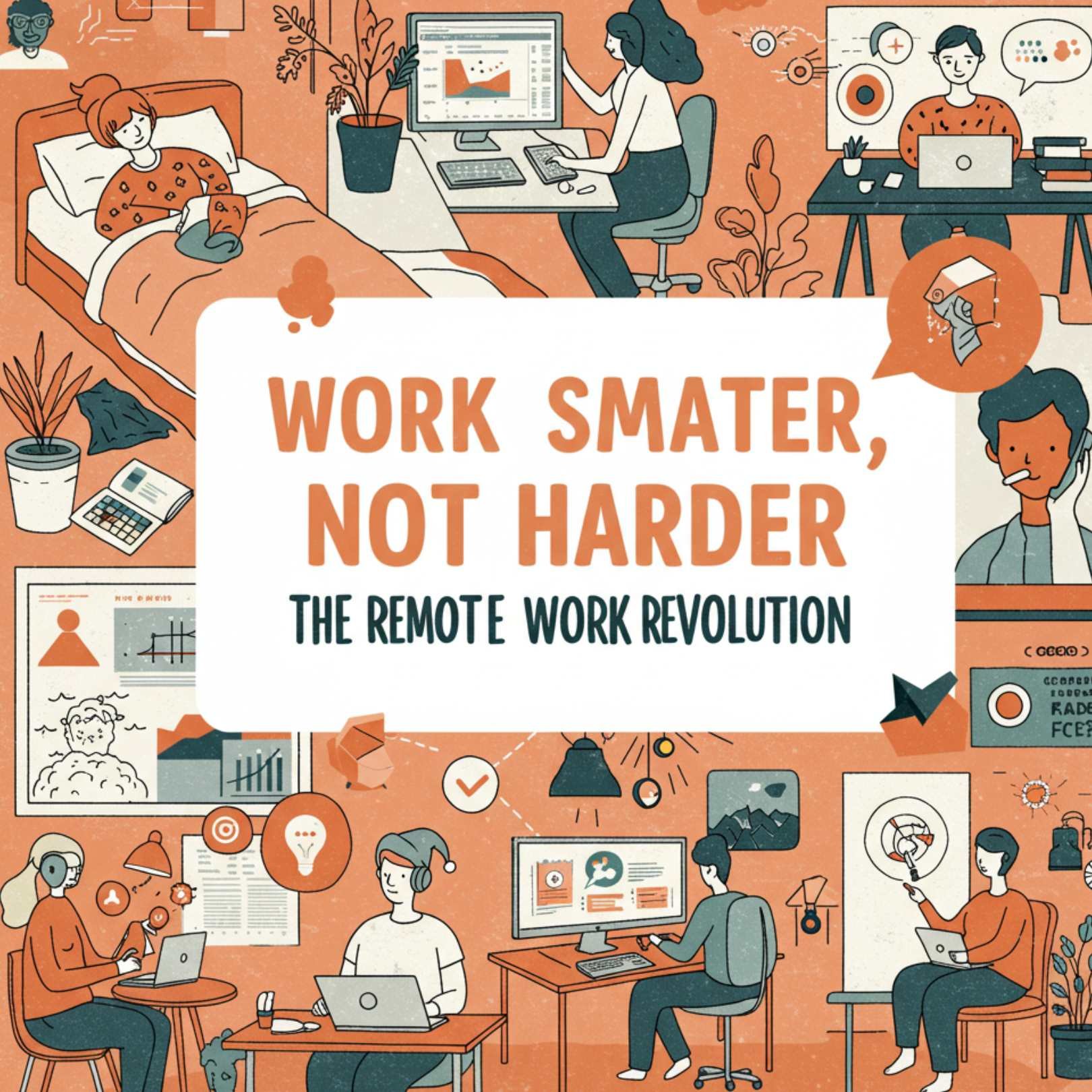Work Smarter, Not Harder: The Remote Work Revolution

The way we work has changed dramatically in recent years. Remote work has become a major force reshaping how we approach our careers, balance our lives, and connect with colleagues. This isn’t just about working from home, it’s a complete rethinking of what work looks like. To understand this shift, we need to look at how we got here and what’s driving this transformation.
The Transition to Remote Work
The move to remote work has been gradual but was sped up by global events like the COVID-19 pandemic. What started as a perk for a few has become a standard option for many. At first, there were concerns about productivity and teamwork, but as technology improved and attitudes shifted, more companies began experimenting with flexible work arrangements.
When the pandemic hit, businesses worldwide had to switch to remote work almost overnight. This sudden change proved that many jobs could be done just as well from home, challenging the idea that offices were essential. As the crisis eased, it became clear that remote work wasn’t just a temporary fix, it was a viable long-term option for many businesses.
Today, we see a mix of remote, in-office, and hybrid work models. This transition hasn’t been without challenges, but it has also opened up new opportunities for both employers and employees. Companies of all sizes are rethinking their work cultures, policies, and infrastructure to adapt to this new reality.
What’s Driving the Remote Work Revolution?
Several factors are fueling the rise of remote work:
- Technology: Tools like video calls, online documents, and team apps have made it easier to work from anywhere.
- Changing Workforce: Younger workers value flexibility and balance, pushing companies to adapt.
- Global Talent: Companies can now hire the best people from anywhere in the world, not just nearby.
- Cost Savings: Both companies and workers save money, less spending on office space, commuting, and other expenses.
- Environment: Less commuting and office energy use is better for the planet.
- Work-Life Balance: Remote work lets people manage their personal and professional lives more easily.
- Resilience: The pandemic showed that flexible work arrangements help businesses keep running during tough times.
This isn’t just a trend, it’s a fundamental change in how we work, offering both challenges and opportunities for everyone involved.
Benefits of Remote Work
Remote work has brought numerous advantages for both employees and employers. Here are some of the key benefits:
- Increased Productivity: Many people find they can focus better and get more done without office distractions. Studies show remote workers are often more productive than their office-based counterparts.
- Better Work-Life Balance: Remote work allows employees to structure their day around personal commitments, reducing stress and improving job satisfaction.
- Cost Savings: Employees save on commuting, work clothes, and meals, while employers cut costs on office space and utilities.
- Access to Global Talent: Companies can hire the best people regardless of location, and employees gain access to more job opportunities without needing to relocate.

Tools That Make Remote Work Possible
Remote work wouldn’t be possible without the right tools. Here are some key ones:
- Online Collaboration Tools – Platforms like Google Docs and Microsoft Teams enable teams to collaborate on documents in real time.
- Video Conferencing – Tools like Zoom and Google Meet facilitate seamless face-to-face meetings online.
- Project Management – Platforms like Trello and Asana help teams stay organized and track progress efficiently.
- AI Assistance & Automation – Tools like Grammarly for writing and Otter.ai for transcription simplify everyday tasks.
- AI Content Generation – Kafkai (Specialized AI writer for blog posts and marketing content), Jasper (Versatile marketing copy generator), Copy.ai (Social media and ad copy creation).
Challenges of Remote Work and How to Overcome Them
While remote work offers many benefits, it also comes with challenges. Here’s how to address them:
- Staying Connected: Use a mix of tools like chat apps, video calls, and project management platforms to keep teams in touch.
- Work-Life Balance: Set up a dedicated workspace and stick to regular work hours to separate work from personal life.
- Security: Use secure tools and training to protect sensitive information.
- Mental Health: Fight feelings of isolation by staying socially connected and taking care of your well-being.
Tips for Remote Work Success
To thrive in a remote work environment, try these strategies:
- Create a Workspace: Set up a quiet, comfortable area for work to help you focus.
- Stick to a Routine: Set regular work hours and take breaks to stay productive and avoid burnout.
- Set Clear Goals: Break big tasks into smaller steps and keep your team updated on your progress.
- Embrace Flexibility: Take advantage of remote work’s flexibility to structure your day in a way that works for you.
The Future of Remote Work
The future of work will likely include a mix of remote and office work. This hybrid approach offers flexibility while keeping some face-to-face interaction. Other trends to watch include:
- Changes to Cities: As remote work grows, cities may spread out, and office spaces could be turned into homes or mixed-use buildings.
- New Company Cultures: Companies are finding new ways to build team spirit and stay connected in virtual settings.
- AI Tools: AI will continue to make work easier, from virtual assistants to smarter collaboration tools.
FAQs
-
What are the benefits of remote work?
Remote work offers increased productivity, better work-life balance, cost savings, and access to a global talent pool. -
How can companies manage remote teams well?
Clear communication, regular check-ins, and the right tools are key to managing remote teams successfully. -
What’s the future of remote work?
The future will likely involve hybrid work models, better technology, and a greater focus on flexibility and balance.
Remote work is here to stay, and by embracing its benefits and tackling its challenges, we can create a more flexible, inclusive, and productive way of working for everyone.
